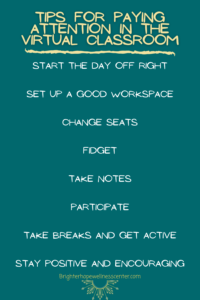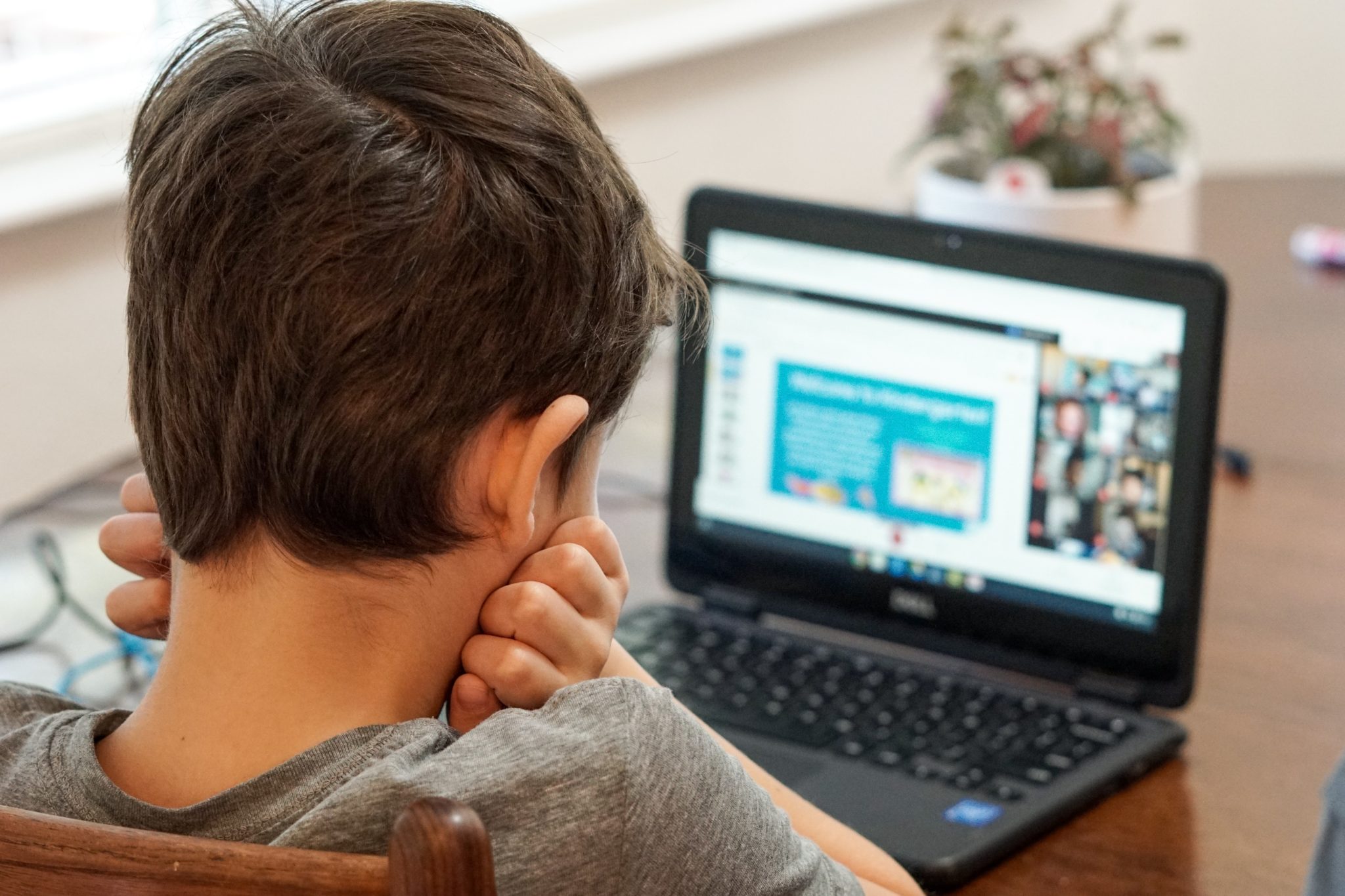School has started and many students find themselves back to online classes due to the Covid-19 pandemic. For many, there are more live virtual classes than in the spring and for some young kids their first experience with preschool and kindergarten is on the screen rather than in the classroom. With this change to their learning environment, some students may find that they are struggling to pay attention online when they may not have had these difficulties in the typical classroom.
What are some things that we can do to help children pay attention?

Start the day off right
Start the day as you would if going to school. Open up the shades in the room and turn on the lights. As much as some kids would like to log on while huddled up under covers in the dark, their brain needs a signal that it’s time to start working and paying attention. Whatever your child would normally do to go to school, do at home as well. Have them change out of their pajamas and into regular clothes. Eat breakfast. Get a good nights sleep. If time, you can add a walk or some exercise before they sit down for classes.
Set up a good workspace
Set up a place to work that is free of distractions. This may be a desk in a room, kitchen table, or spot in the living room, or even outside. Ideally, find a place that will not have people walking in and out in the background or a lot of distracting noise. To further reduce distraction or if multiple kids will be working in the same room, a cardboard privacy divider that kids can help to decorate and personalize can be placed around their workspace. Headphones can also reduce extra noise. Have materials that they need available so that they don’t have to go searching for them in the middle of class. Older children/teens with access to phones will want to keep them away from their workspace or with notifications turned off so they won’t be tempted to check their social media or browse YouTube during class.
Change seats
Not all kids pay attention best while sitting at a desk without moving for a long period of time. You may find it easier for them to use an alternative seat such as a big yoga ball or bean bag chair. For some kids, standing might even be better. Try different arrangements and see what works best.
It’s okay to fidget
Kids may need a place for excess energy to go while they’re sitting. Allowing them to have some movement with their hands while focusing on a task may help their brain to focus more on the task on hand. Fidgets are popular items that children can fiddle with while listening to the teacher. This can be a squishy toy, play doh, or a small cube. It should be something quiet and non-distracting. Some elaborate spinning or flashing fidget toys can end up doing the opposite of its intention.
Take notes
Another way to keep hands busy is to take notes. This will help students to stay actively engaged in class while also help with remembering material for later. To make things more fun they could use brightly colored pens or pencils.
Participate
Ask questions and participate in class discussions. The more students are engaged, the more apt they are to be attending and learning the material.
Take breaks and get active
Use the time when not in class to do something active. Routine exercise can help improve attention and additionally help to reduce stress and lower anxiety. If your child is prone to wiggle, burn some energy 10 minutes before class begins. It could be something like jumping jacks or dancing around to music. Many schools have a longer break in the middle of a day, which can be a great time to take a walk or play outside. This can also be a good time to have kids help make lunch or learn to cook a meal.
Stay positive and encouraging
Each child is going to have different needs. Experiment with different methods to see what works best. Check in with your child on how they’re feeling and what they think is working. For younger children, give positive encouragement for staying on task or remaining at their workspace. Small stickers or rewards after each class may be used. You can also use rewards for reaching weekly goals e.g., game night, art project, favorite dessert, pass from chores, choose dinner, or extra screentime. You might want to have a fun activity to look forward to when classes are done or a family activity to look forward to at the end of the week. Stay positive and model an encouraging attitude. This will help your kids develop positive behaviors as well.
In need of services? Request an appointment with one of our clinicians at Brighter Hope Wellness Center.

